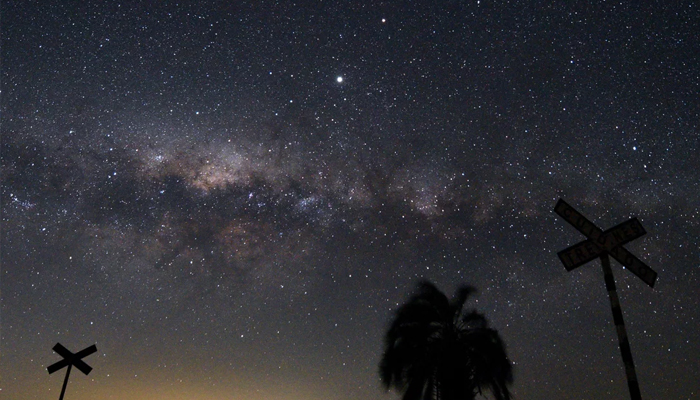Is the planetary alignment a 'one in 396bn years event'?
Planets are always aligned with each other as they are not racing all over in the solar system as they orbit the sun
January 17, 2025

Social media is flooded with posts and videos about the upcoming "one in 396 billion years" planetary alignment happening on January 25. Turns out social media is not reliable and people do not have to wait to see it.
Four planets in our solar system are easily visible to the naked eye this month and then in February, there will be five to see.
The planetary alignment is not something out of the ordinary, nor is it irregular or a weird phenomenon; however, it is indeed a spectacular sight, according to Forbes.
Here is what to know about the famous "planet parade" and how can one see it.
What is a planet parade?
Planet parade is a term commonly used by people when there are more than a few planets to be seen in the night sky.
It is also often said that planets like Uranus and Neptune which are too small to be seen by the naked eye are visible at the time of the parade.
So why is the term still used? This is mainly due to Jupiter remaining bright in the sky, while Venus and Mars will be at their brightest in the post-sunset sky for the next couple of years.
With Saturn still visible and Mercury still appearing, four or five planets in the solar system can be seen with the naked eye.
Why is the parade not an alignment?
Planets are always aligned with each other. The solar system is made as such that planets are not racing all over as they orbit the sun. They revolve around the sun in near circles. This debunks the whole "once in 396 billion years planetary alignment" happening on January 25.
All planets in the solar system can be seen in a line in the night sky. It is easy to spot them as it's also the sun's path through the daytime sky. The phenomenon is called the ecliptic because it is the plane along which both the Moon and the Sun appear to move across the sky, and this alignment causes occasional eclipses.
The visibility of the number of planets depends on where they are in their journeys around the sun. Some will appear closer to the sun but they are lost in the glare. Others are visible at night from Earth due to them being furthest from the sun.









